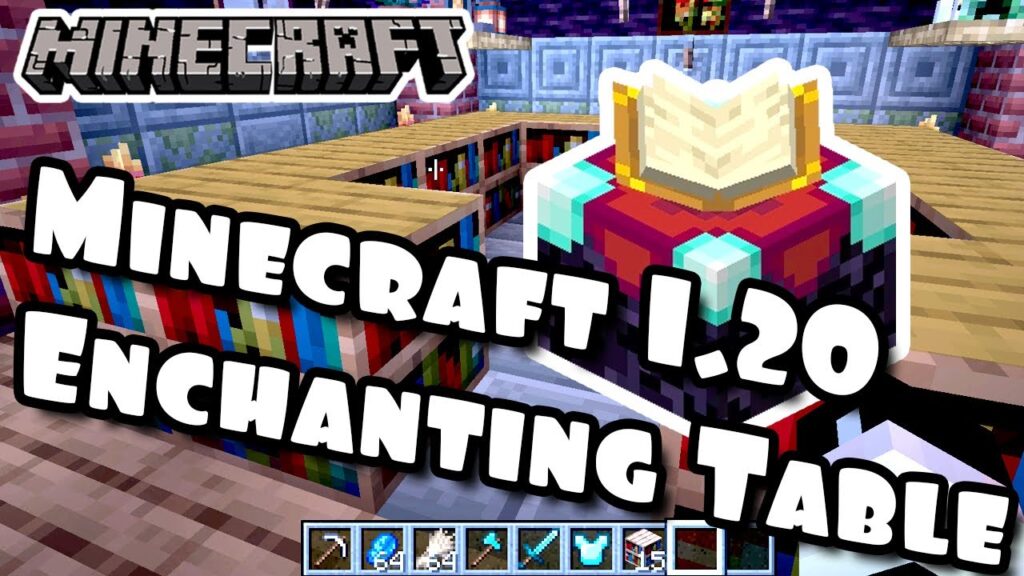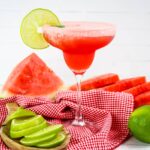
Unlocking the Secrets: A Comprehensive Guide to the Minecraft Enchantment Table
In the vast and ever-evolving landscape of Minecraft, players are constantly seeking ways to enhance their tools, weapons, and armor. One of the most crucial elements in this pursuit is the enchantment table. This seemingly simple block holds the key to unlocking powerful abilities, transforming ordinary items into instruments of unparalleled strength and utility. This comprehensive guide delves into the intricacies of the enchantment table, exploring its function, crafting process, and the enchantments it can bestow.
Minecraft, with its blocky charm and boundless possibilities, has captivated players worldwide. Whether you’re a seasoned veteran or a fresh-faced adventurer, understanding the enchantment table is essential for thriving in the game. It’s not merely a decorative block; it’s a cornerstone of progression, allowing you to overcome challenges, conquer enemies, and explore the depths of the game with greater ease and efficiency.
Crafting the Enchantment Table: A Foundation of Power
The journey to mastering enchantments begins with crafting the enchantment table itself. This requires gathering specific resources and understanding the crafting recipe. Fortunately, the process is relatively straightforward, though it does necessitate some exploration and resource gathering.
To craft an enchantment table, you will need the following materials:
- 4 Obsidian blocks: Obsidian is a dark, hard block that can be mined after creating a diamond pickaxe. It’s formed when lava flows over a water source.
- 2 Diamonds: Diamonds are a rare and valuable resource, found deep underground.
- 1 Book: Books are crafted from paper and leather. Paper is made from sugar cane, and leather is obtained from various animal mobs.
Once you have these materials, open your crafting table and arrange them according to the specific recipe. The obsidian should form the corners of the crafting grid, the diamonds should be placed in the center, and the book should be placed above the diamonds. This will produce your very own enchantment table.
Understanding the Enchantment Table Interface
Once you’ve crafted your enchantment table, the next step is to understand how to use it. The interface is simple, but its functionality is more complex than it initially appears.
Interacting with the enchantment table opens a unique interface. You’ll typically see slots for placing the item you wish to enchant and a display of potential enchantments. The enchantments available are influenced by several factors, including the item type, the level of experience you have, and the presence of bookshelves nearby.
To enchant an item, simply place it in the designated slot. You’ll then be presented with three enchantment options, each with a cost measured in experience levels. Selecting an option consumes experience points and applies the corresponding enchantments to your item. The specific enchantments and their levels are randomized, adding an element of chance to the process.
Maximizing Enchantment Potential: The Role of Bookshelves
The effectiveness of your enchantment table is directly influenced by the presence of bookshelves. Bookshelves provide “enchantment power,” which increases the maximum level and potency of the enchantments available. Strategically placing bookshelves around your enchantment table is crucial for achieving the best results.
Here’s how bookshelves impact your enchanting experience:
- Placement: Bookshelves must be placed within one block of the enchantment table and not directly behind it.
- Distance: The bookshelves must also be within a one-block radius of the enchantment table.
- Blockage: Bookshelves cannot be blocked by any other blocks. Torches and other decorations can obstruct the connection to the enchantment table.
- Maximum Power: The maximum enchantment power achievable is 30. Achieving this requires 15 bookshelves.
Careful arrangement of bookshelves around your enchantment table is an investment that will pay off handsomely in the long run, allowing you to unlock the most powerful enchantments available. This setup is the best way to utilize the full potential of the enchantment table.
Decoding Enchantments: A World of Possibilities
The enchantment table offers a vast array of enchantments, each tailored to enhance a specific aspect of your gear. Understanding these enchantments is key to optimizing your gameplay and tailoring your equipment to your preferred playstyle.
Here are some of the most common and valuable enchantments you can obtain through the enchantment table:
- For Swords:
- Sharpness: Increases melee damage.
- Fire Aspect: Sets enemies on fire.
- Looting: Increases the amount of loot dropped by defeated mobs.
- Knockback: Knocks enemies back further.
- Sweeping Edge: Increases the damage dealt in a sword’s sweeping attack.
- For Armor:
- Protection: Reduces all types of damage.
- Thorns: Damages attackers when they hit you.
- Respiration: Increases underwater breathing time.
- Aqua Affinity: Increases underwater mining speed.
- Feather Falling: Reduces fall damage.
- For Tools:
- Efficiency: Increases mining speed.
- Fortune: Increases the amount of resources gained from mining or farming.
- Unbreaking: Increases the durability of tools.
- Silk Touch: Allows you to mine blocks and obtain them as they are.
- For Bows:
- Power: Increases arrow damage.
- Punch: Knocks enemies back.
- Flame: Sets arrows on fire.
- Infinity: Allows you to shoot arrows without consuming them (requires one arrow in inventory).
This is not an exhaustive list; many other enchantments exist, each with its own unique effects. The specific enchantments available are often item-dependent; for instance, you can’t enchant a sword with feather falling.
Finding Enchantments: Alternative Methods
While the enchantment table is the primary method for obtaining enchantments, there are other ways to acquire them in Minecraft. These alternative methods can be particularly useful if you’re looking for a specific enchantment or if you want to bypass the randomization of the enchantment table.
- Enchanted Books: Enchanted books are pre-enchanted books that can be found in various locations, such as dungeons, villages, and end city chests. These books can then be combined with items using an anvil to apply the enchantment.
- Trading with Villagers: Librarians, a type of villager, specialize in trading enchanted books for emeralds. This can be a reliable way to obtain specific enchantments, especially if you find a villager with a trade you like.
- Fishing: Fishing can sometimes yield enchanted books and enchanted items.
These alternative methods provide flexibility and can complement the use of the enchantment table.
Advanced Techniques and Considerations
Beyond the basics, there are some advanced techniques and considerations to keep in mind when using the enchantment table. These tips can help you maximize your enchanting efforts and get the most out of your gear.
- Experience Farming: Since enchanting requires experience levels, consider setting up an experience farm. This can involve creating a mob grinder or utilizing other methods to efficiently gain experience.
- Anvil Combinations: The anvil is an essential tool for combining enchanted items and applying enchantments from enchanted books.
- Enchantment Limits: Be aware that some enchantments are mutually exclusive. For example, you can’t have both Silk Touch and Fortune on the same tool.
- Prioritization: Focus on enchanting items that are frequently used and that will benefit you the most in your current gameplay.
These advanced techniques can significantly improve your efficiency and effectiveness in the game. Understanding the intricacies of the enchantment table is key to success.
The Enchantment Table’s Impact on Gameplay
The enchantment table isn’t just a crafting station; it’s a catalyst for strategic decision-making and personalized gameplay. The enchantments you choose, the items you enhance, and the strategies you employ all contribute to your unique experience in Minecraft.
The enchantment table allows players to customize their gameplay experience, catering to their preferred playstyles. Whether you’re a builder, a explorer, or a combatant, the enchantment table offers a way to tailor your gear to your specific needs.
The enchantment table also encourages exploration and experimentation. Finding the best combinations of enchantments, discovering new strategies, and adapting to the challenges of the game are all part of the fun. The enchantment table is a key component of the Minecraft experience.
Conclusion: Mastering the Enchantment Table
The enchantment table is a powerful tool that every Minecraft player should master. From crafting the table itself to understanding the intricacies of enchantments, this guide has provided a comprehensive overview of this essential game mechanic. By following these tips and understanding the concepts discussed, you can unlock the full potential of your gear and conquer the challenges that await you in the world of Minecraft. Embrace the power of the enchantment table and embark on a journey of endless possibilities.
For further information on related topics, see also: [See also: Minecraft Crafting Guide], [See also: How to Build a Mob Farm], [See also: Best Minecraft Seeds].

